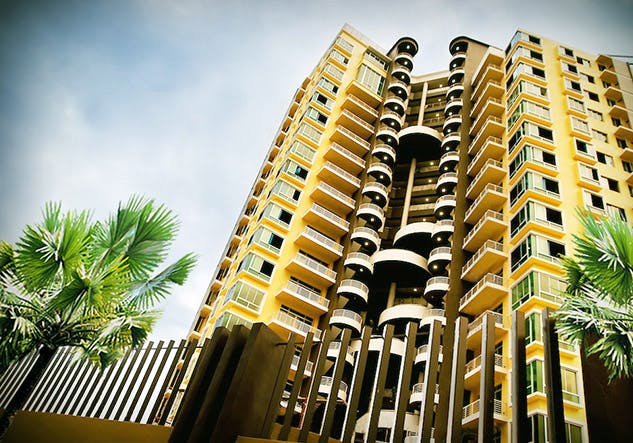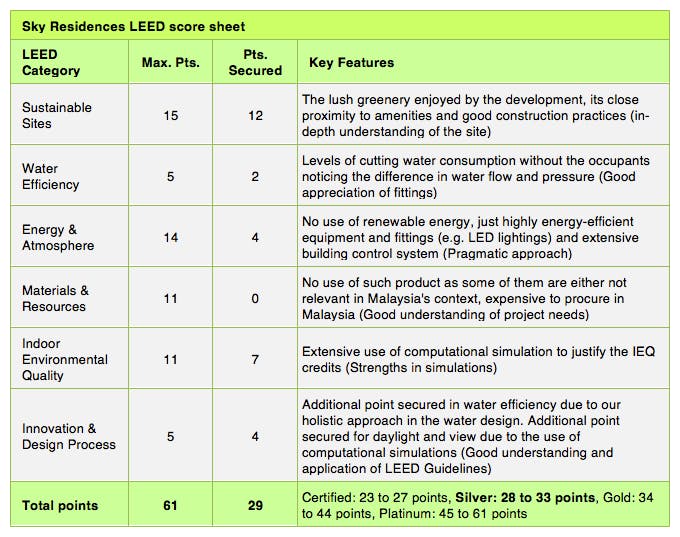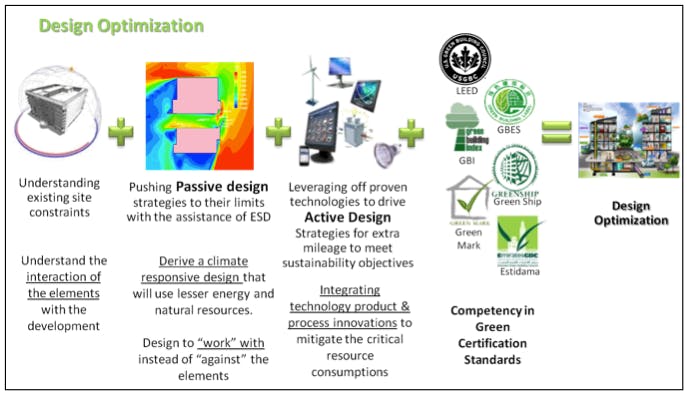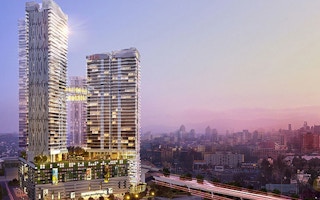The steady rise of green buildings across the world in recent years is a visible reflection of green architecture’s move from fringe to mainstream. But despite its proliferation, one common misperception that has lingered is that building green is costly.
This is a myth that Surbana International Consultants, a Singapore-headquartered building consultancy, aims to debunk.
This fear of higher costs is hindering individuals, clients and those in the construction industry to pursue green buildings and certification. Most are not aware that costs can be minimised with the right strategies in place, says Surbana.
The firm, which has its roots as the building arm of the city-state’s public housing authority, has years of experience providing quality living spaces that are affordable. In recent years, the firm has expanded their footprint beyond Singapore to reach countries such as China, India, Vietnam and the United Arab Emirates. There, they not only promote cost-effective structures but also green architecture. The firm also strictly complies with ISO-14000 environmental management standards, a set of internationally recognised criteria that enables organisations to operate in a more sustainable manner.
In Singapore, for example, their Treelodge@Punggol project, which has features like solar panels on the roof and a rainwater harvesting system, became the first ecologically designed public housing to receive a Green Mark Platinum Award from the country’s Building and Construction Authority.
Joy Gai, senior engineer for sustainable design at Surbana, told Eco-Business that in the course of their work, the most commonly asked question they receive from clients these days is: “How much more will I have to pay to build green?”
The issue of costs, though, is dependent on various factors, she pointed out. The site location or the natural environment where the building is to be constructed plays a big role, as well as the size of the building, the direction of the clients, and the amount of time consultants are involved.
Citing two recent projects by Surbana, Gai explains how these factors and their costs can be managed during the construction phase to achieve a low- or zero-cost green building, particularly through the use of passive design strategies.
Sky Residences, Sungai Petani Kedah, Malaysia
Located at the Cinta Sayang Golf Country Resort, in Sungai Petani Kedah, Malaysia, Sky Residences is an 18-storey condominium development launched in 2009, which is the country’s first LEED-awarded building.
LEED or Leadership in Energy and Environmental Design is the green building rating system in the United States that is also widely used in different parts of the world.

Sky Residences at at the Cinta Sayang Golf Country Resort in Malaysia is the first LEED-certified bulding in the country. Image: Surbana
At the time of construction, Malaysia’s own green building certification scheme, the Green Building Index (GBI), was not yet established (as it was only launched in 2009). But that did not stop Surbana from encouraging their clients to apply for awards in other green buildings standards.
Gai explained that LEED was their standard of choice since it was internationally recognised and its mandatory requirements for naturally ventilated buildings were easy to comply with. The certification is also based on a accumulation of points matching a set of different criteria.
She noted, on the other hand, that GBI does not have any mandatory requirements, such as on-site visits and verification or soil erosion control, which the LEED certification requires.
Other certification schemes such as the Indian Green Building Council Green Homes rating system have more stringent guidelines, requiring both a points system and mandatory components - for example, meeting local building regulations, among others.
Still, despite the advantages of LEED, Beh Huck Lee, managing director of Eupe Corporation Berhad, the developer of Sky Residences, shared that their LEED certification “has not come easily”. Every phase over the project’s two years of construction, from design to waste generated, was carefully controlled and monitored, he told Malaysia’s Chinese newspaper Guang Ming Daily at the time of the LEED certification awarding in 2010.
Since a certain number of points are needed per category under the LEED scheme, Gai explained: “Surbana’s strategy was to focus on those with minimum cost impact.”
This means they applied sustainability principles to different components of the building design that would not require huge investments, such as:
- assessing the natural conditions of the site and incorporating the environment into the development;
- implementing good construction practices, such as segregating waste for recycling and prohibiting smoking on site to maintain clean air quality;
- using water-efficient fittings and LED lighting; and
- implementing a comprehensive building control system that monitors energy use.
This enabled the firm to attain a sufficient amount of points within the LEED Silver rating range.

A highlight of Sky Residences is the significant use of natural ventilation and daylight within the building. “The design of the building followed the orientation that would capitalise on these best. Window openings and locations were carefully examined using computer analysis tools to ensure thermal comfort,” explained the engineer.
After applying these minimum cost design strategies, the total cost of building Sky Residences amounted to about SGD 17.5 million, according to Surbana.
“Our experience in this project and LEED certification could help inform others that low or no additional costs for building green is possible. But bear in mind that no two projects are the same, so nobody can completely guarantee that going sustainable is free for all projects,” Gai said.
Datum Jelatek, Ampang Selangor, Malaysia
Datum Jelatek in Malaysia is another example of how green buildings can be built with minimal cost. The project consists of four residential towers – linked together with the country’s first Sky Garden Ring – which is located in a mixed development project in Ampang Selangor in Kuala Lumpur, set to be completed in 2018.
Similar to Sky Residences, Datum Jelatek’s residential buildings make ample use of natural ventilation to maximise the breeze and natural light. Surbana uses this approach to help reduce air conditioning use and costs. But they also take note of the amount of light that comes in, since this can lead to heat transfer affecting the interior atmosphere.
Datum Jelatek, unlike Sky Residences, followed the GBI programme and was awarded the Silver rating in April 2013. One of the ways the company lowered construction costs was by recycling construction waste. A rainwater harvesting system was also added to reduce water used for irrigation.

Compared to Sky Residences, the Jelatek project had the better advantage in terms of managing the green building design and costs, noted Gai. “The GBI consultant was on-board in the very early stages, particularly the concept stage, so we were able to influence the architectural design from the beginning and we were able to put some basic green features into the tender specification,” she explained.
These include passive design elements that involved no costs for the client yet boosts the GBI score. Passive design are features that use the natural environment such as the building site and climate for improved indoor air quality, as opposed to active design components like building technologies that can be pricey.
“
Honestly, the green building movement is still approached top-down, with the government directing the industry to follow regulations and enticing businesses with incentives. Most developers and clients are only interested with green buildings because of the prospect of receiving payback benefits, funding, additional media mileage, or winning green awards
Joy Gai, Surbana senior engineer for sustainable design
‘Formula’ to optimise design, multiply benefits
The overall strategy to manage green building costs while achieving design effectiveness is all in the “design optimisation”, stressed Gai. According to the senior engineer, there is a four-step formula that Surbana follows to minimise costs while achieving sustainability:
- Start from the site condition. Understand the surrounding environment and list the natural resources available that can be used, Gai noted. “The idea is to let nature take the first step to help you achieve good design.”
- Use computer simulations to analyse how natural wind, light, and other conditions impact the project. The goal is to make the most of passive design.
- Add active design features or green technologies like solar panels or lighting sensors, in so far as it can boost building performance. “Cost benefits have to be evaluated to prioritise which green features are important and to avoid misuse of technologies. Sometimes, project developers bring in the trendiest or most advanced technologies into the building design and assume these are ‘green’, but this will only cause a flooding of technologies that increase the building cost unnecessarily,” she said.
- Apply for green building certification. Whether LEED or the GBI, the standards they require further improve the initial environmental design.

Implement these principles and the building can be green with minimal additional investment, said Gai.
“Honestly, the green building movement is still approached top-down, with the government directing the industry to follow regulations and enticing businesses with incentives. Most developers and clients are only interested with green buildings because of the prospect of receiving payback benefits, funding, additional media mileage, or winning green awards.”
“As consultants, we are, therefore, willing to go the extra mile to prove to them that building green is not necessarily about all these, nor about costs alone. Applying sustainability in building design and construction has many other substantial benefits such as improved health and comfort for occupants, and long-term operational savings,” she added.





















